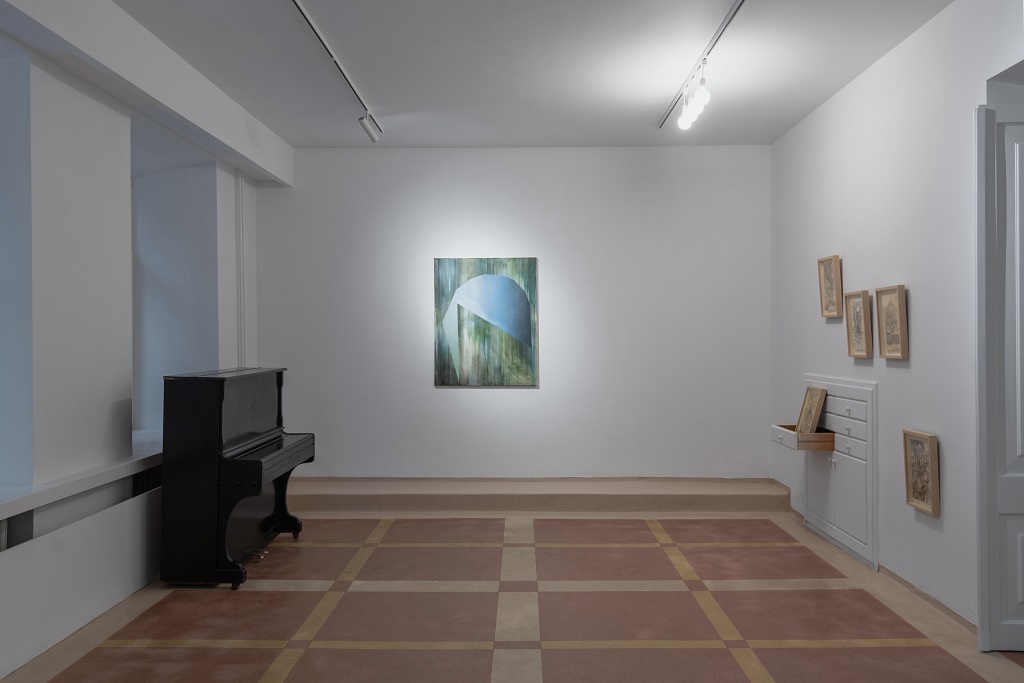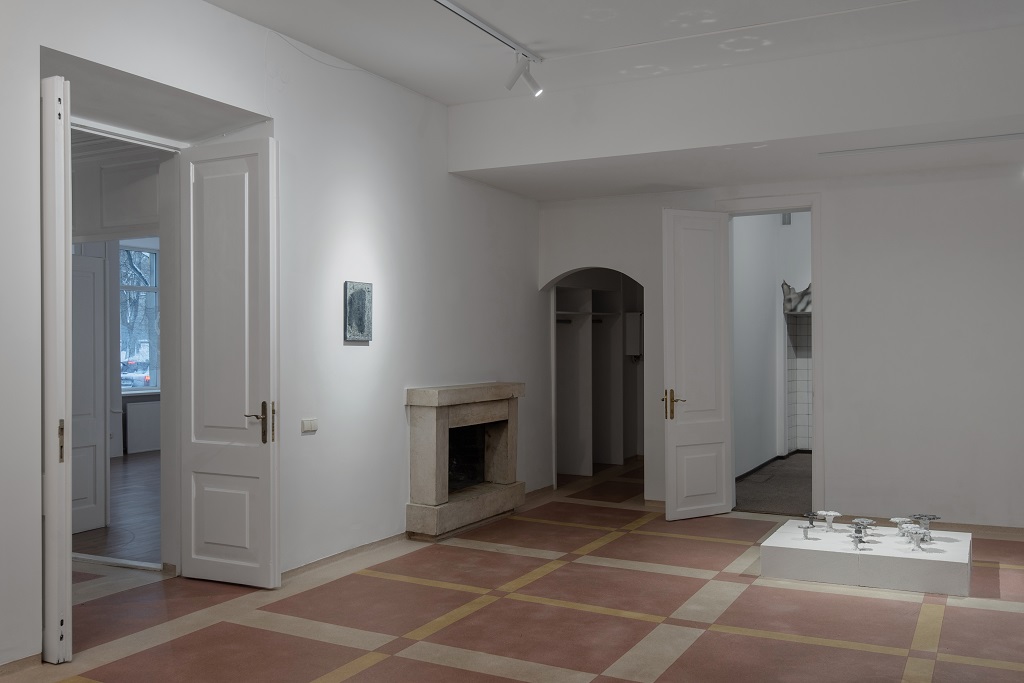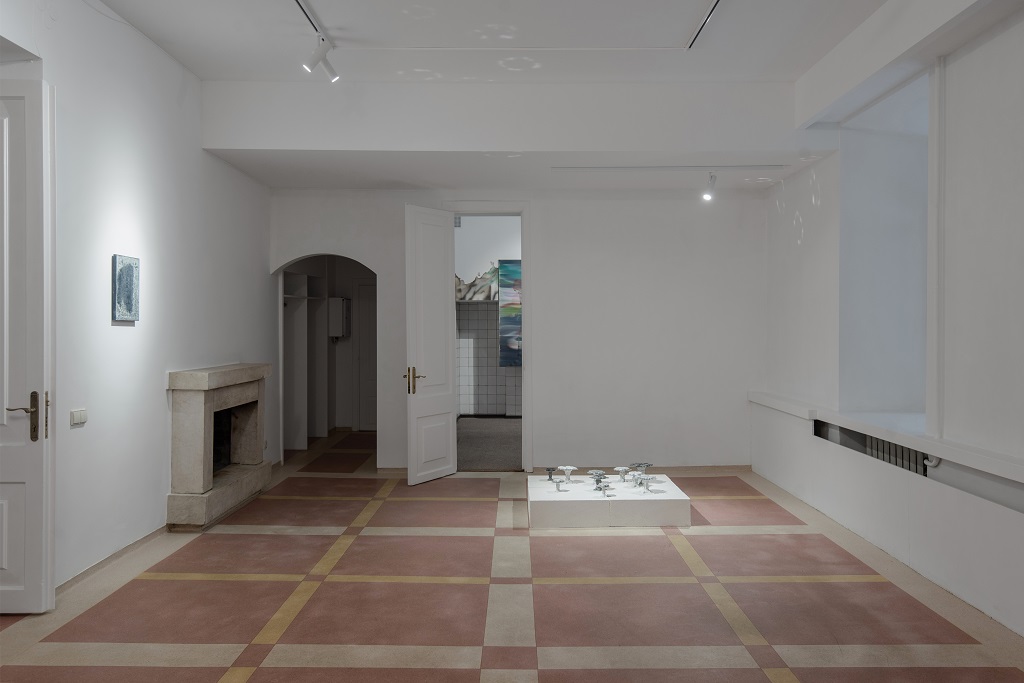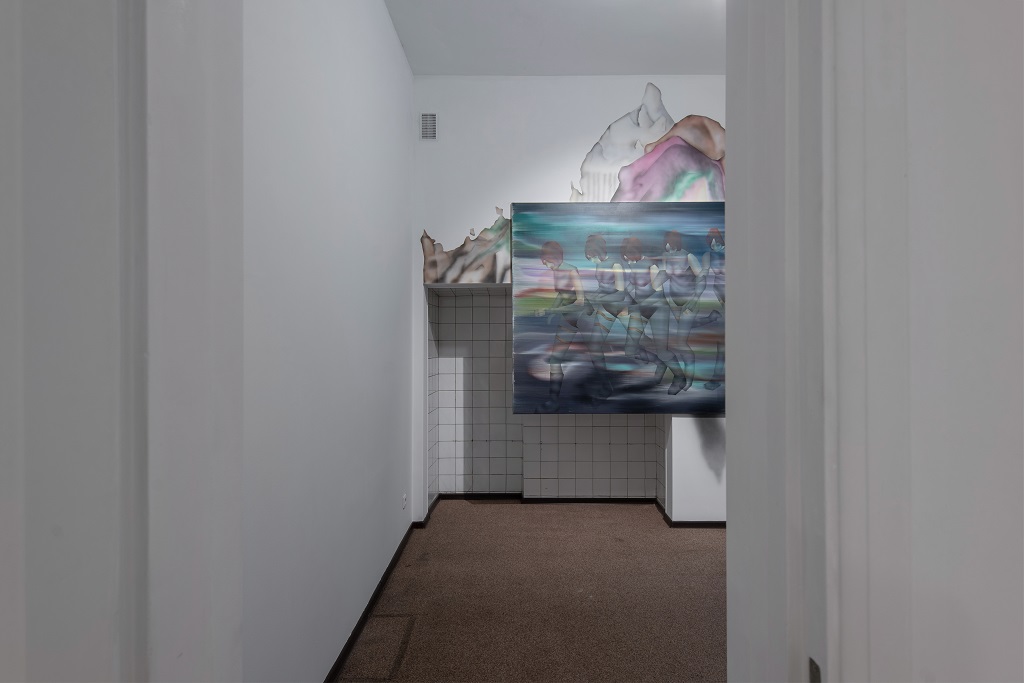
Exhibition text in Lithuanian – Parodos tekstas lietuvių k.
15 December 2022 – 28 January 2023
Šarūnas Baltrukonis, Vytenis Burokas, Agnė Juodvalkytė, Delphine Lejeune, Beatričė Mockevičiūtė, Agata Orlovska, Ieva Rižė, Mantas Valentukonis.
Sound performance Gailė Griciūtė
Drifts is a new contemporary art gallery that will soon open its doors just by the Wroblewski Library. The name is a reference to the circumstances of the gallery’s establishment and the search for its form. At the same time, it is also the title of its first exhibition—a show almost physically experiencing the flow of the present and the aesthetics of change.
Obsessed with the present and the challenges of writing about the present tense, Kate Zambrena wrote her novel Drifts (2020) allowing herself to be carried by the flow of everyday life and its multifarious manifestations, engaging in intimate inner dialogues with artworks and portraits of famous artists such as Albrecht Durer, Chantal Akerman, Rainer Maria Rilke and others. Reading this book, I found discovered of creativity composed of fragments of thoughts, images and experiences. The book thus became an impulse to search for my own form, a form that questions itself and the present, a form that is destined to collect crumbs of everyday life and itself become change.
“Perhaps to begin Drifts I have to find a door” (quote from Zambreno’s novel Drifts)—a door through which you can enter and experience. This door emerged at the edge of the Wroblewski Library, where the flow of everyday life has long since depersonalised it.
After walking through and across the rhythmic silence of the river’s currents and drifts, I find myself immersed in the speed of the centuries by the Cathedral Square, with a gaping stream and mute relics of memory emerging right in front of me. The gallery’s location, in turn, seems as if wrapped in a modern-time garment of Marc Augé’s non-place. Having taken root in the transit part of the city, depersonalised by the flow of time, faceless and surrounded by tourist architecture, the gallery turns into the real archetype of a passer-by space. The historical context of the place poses a task, but the flow immediately submerges the latter into the drifts. As I hear Klementyna whisper (Klementyna Potocka Tyszkiewicz, the commissioner of the Wroblewski Palace, who fostered the traditions of exhibitions and collecting), I settle in a unique historical place with a lot of symbolic layers, an embodied memory and an identity, which the gallery’s future will most definitely explore in more depth.
The body of the exhibition is given over to the present, inviting us to experience it through the play of drifts, coastal vegetation, and the aesthetics of change. The first exhibition to be presented in the gallery is a group show of contemporary artists collaborating with the gallery as much as being its friends.
The exhibition’s drifty nature is created by visual islands—timescapes inhabited by individual narratives of the artists’ creative work. The works communicate through subtle interrelations, contrasts, perhaps even friction, but each of them inevitably creates its own relationship with the gallery space and the objects left here—the fireplace, the tiles, traces of dirty windows, the wardrobe, the piano, the patterns on the linoleum; in the flow, these spontaneously emerging relationships nostalgically bring about a salon-like cosiness and question the spatiality of the “white cube”.
Agnė Juodvalkytė’s paintings Lullaby (In Blue) (2021) and Blueberries (2021) from the series Anska are a product of reflecting on recurring horizons. The large-format monochrome canvases echo the leitmotifs of nature and the states of anticipation and peace.
In the form of an archetypal image arises Vytenis Burokas’s zoomorphic creature resembling an octopus—one of the most intelligent creatures of the ocean with a decentralised nervous system. It emerges from the depths of the drifts and currents, as if searching for remnants of collective memory with its tentacles. Ieva Rižė’s work I Was Here I Was (2022), created specifically for this exhibition, embodies a gentle expression of movement and fading corporeality and engages in a subtle temporary dialogue with the human traces left in the windows. Also presented for the first time is Rižė’s series of drawings, Archaeology of a Non-Existent Garden (2022), made up of echoes of the sensory world.
A paper object from Beatričė Mockevičiūtė’s series Asukas creates a personal relationship with the gallery’s architecture and light, reflecting on the possibility of imagining the city as a stencil for sunlight. Agata Orlovska’s How a Melting Snowflake Sounds (2021) invites us to try to hear a melting snowflake, gently capturing the poetics of change.
Another work specifically created for this exhibition, Delphine Lejeune‘s I’ll take care of you (2022) is a poetic projection exploring the meaning of garden as a form of cultural communication. By representing Nature through technological production, the installation creates a staged and digitalised version of it, offering a new place of illusion.
Šarūnas Baltrukonis and Mantas Valentukonis’s canvases reflect on the interactions between reality and digital space. Baltrukonis’s Crooked Balance (2022) explores contrasts and the state of losing one’s balance under the influence of different forces and laws. Valentukonis’s Man Eater (2022), in turn, a painting created especially for the gallery space, interacts with the pixelated tile motif and creates a unique world milieu.
Curators:
Jolanta Laurent, Monika Lipšic
Graphic designer:
Vytautas Volbekas
Translation and proofreading:
Aleksandra Bondarev
Photos Lukas Mykolaitis
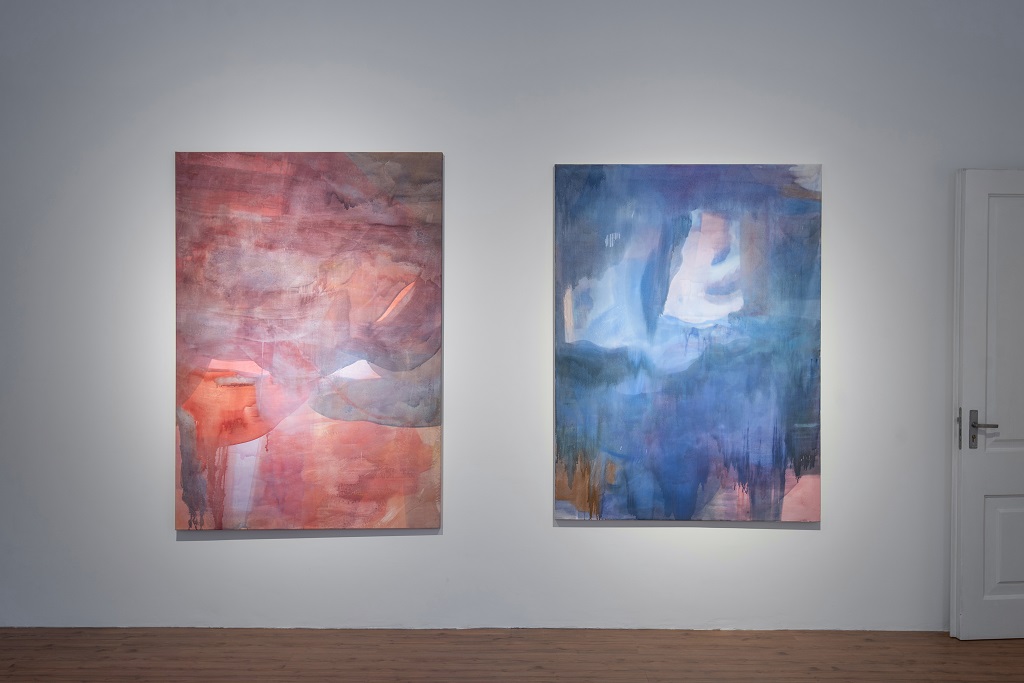
Exhibition view: Agnė Juodvalkytė, Blueberries, 2021; Agnė Juodvalkytė, Lullaby (In Blue), 2021
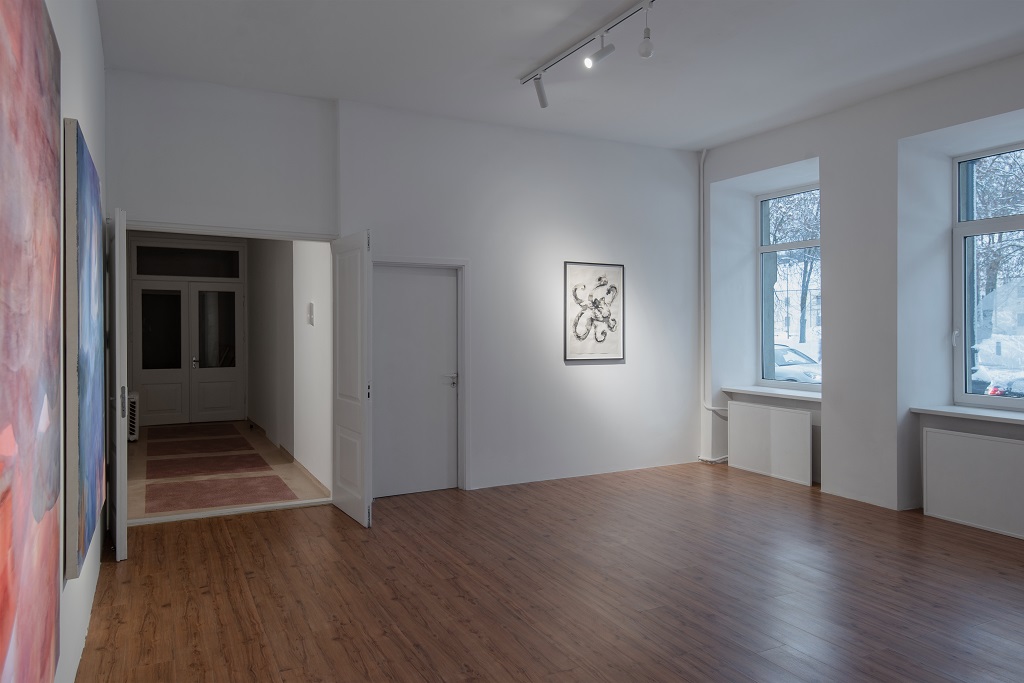
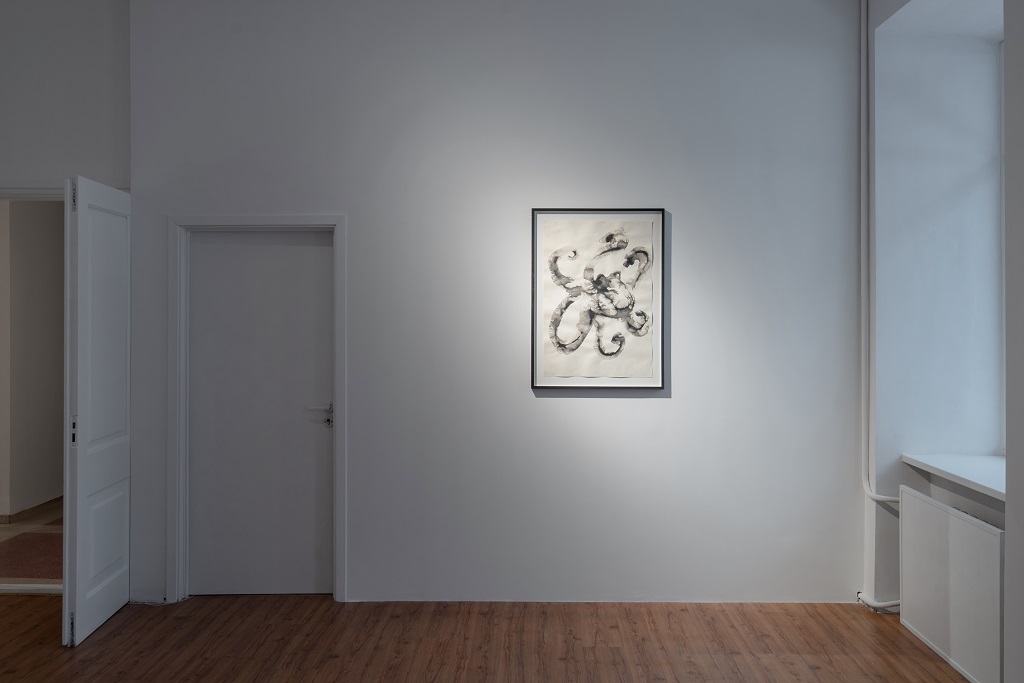
Exhibition view: Vytenis Burokas, Octopus, 2019
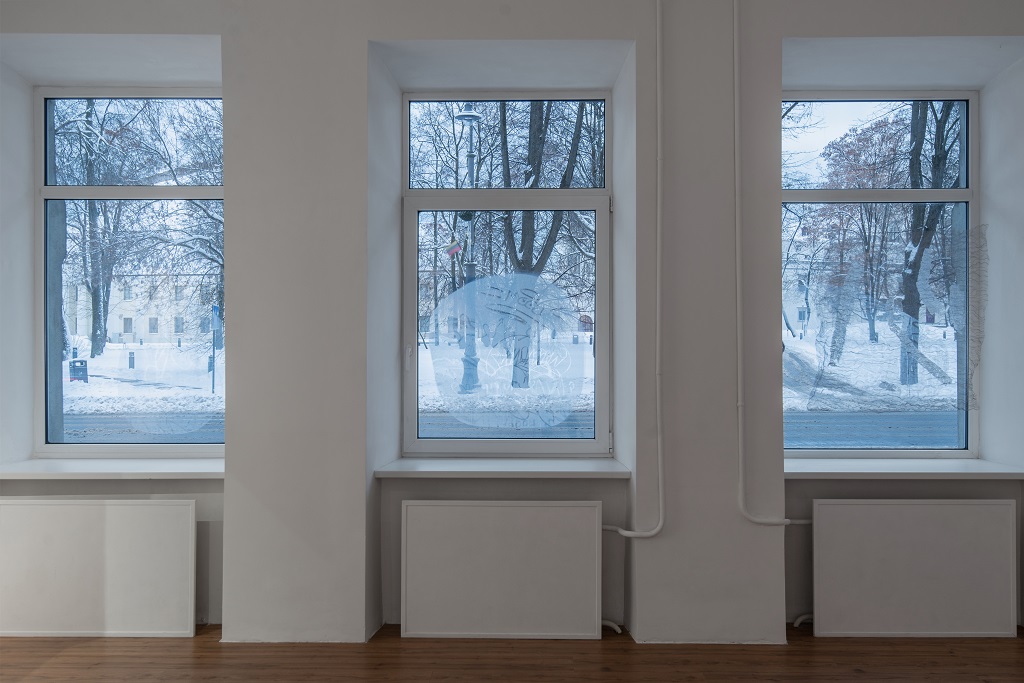
Exhibition view: Ieva Rižė, I Was Here I Was, 2022
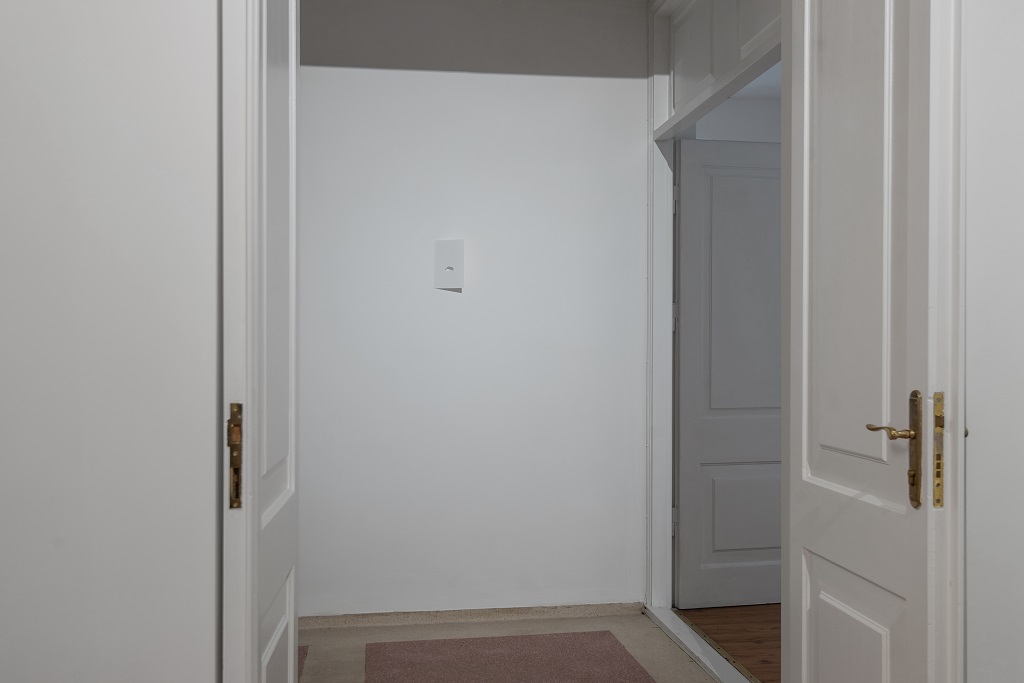
Exhibition view: Beatričė Mockevičiūtė, Paper object from series Asukas, 2022
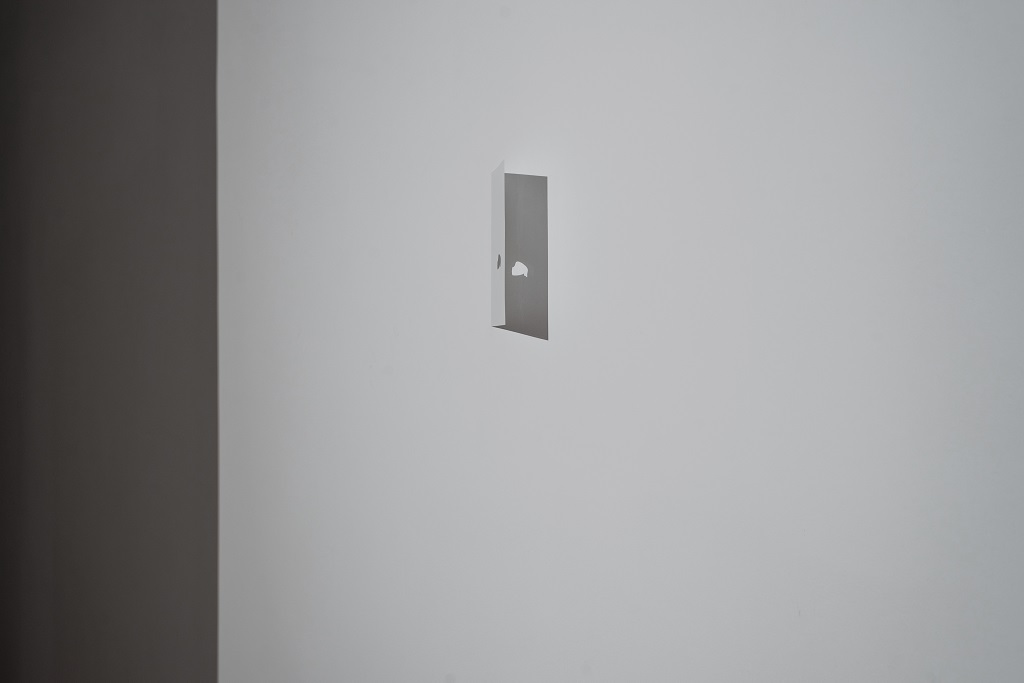
Exhibition view: Beatričė Mockevičiūtė, Paper object from series Asukas, 2022
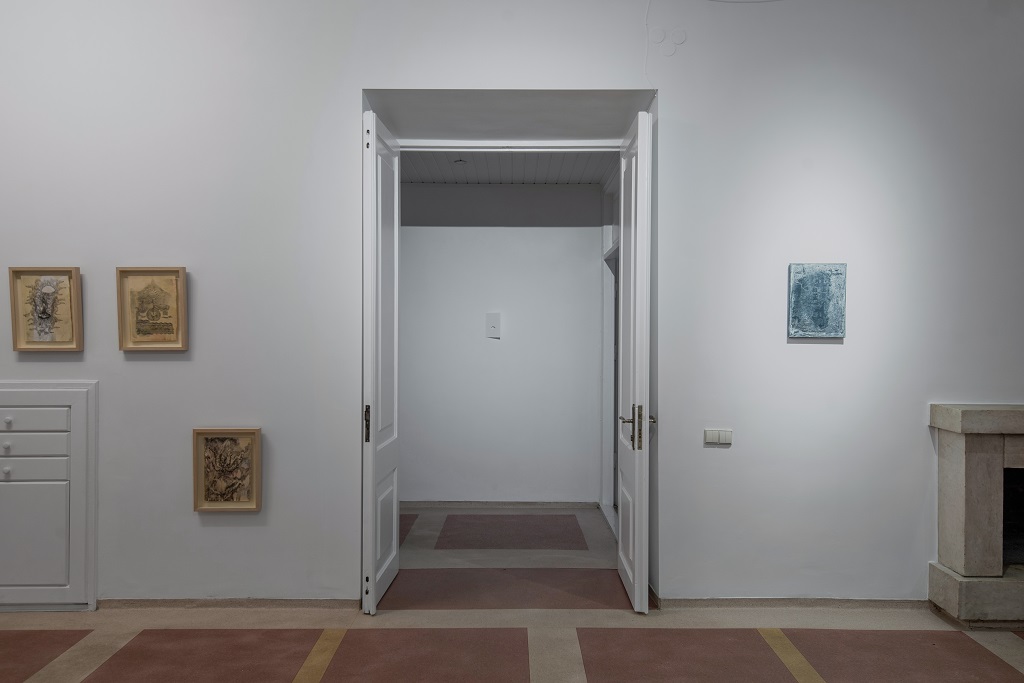
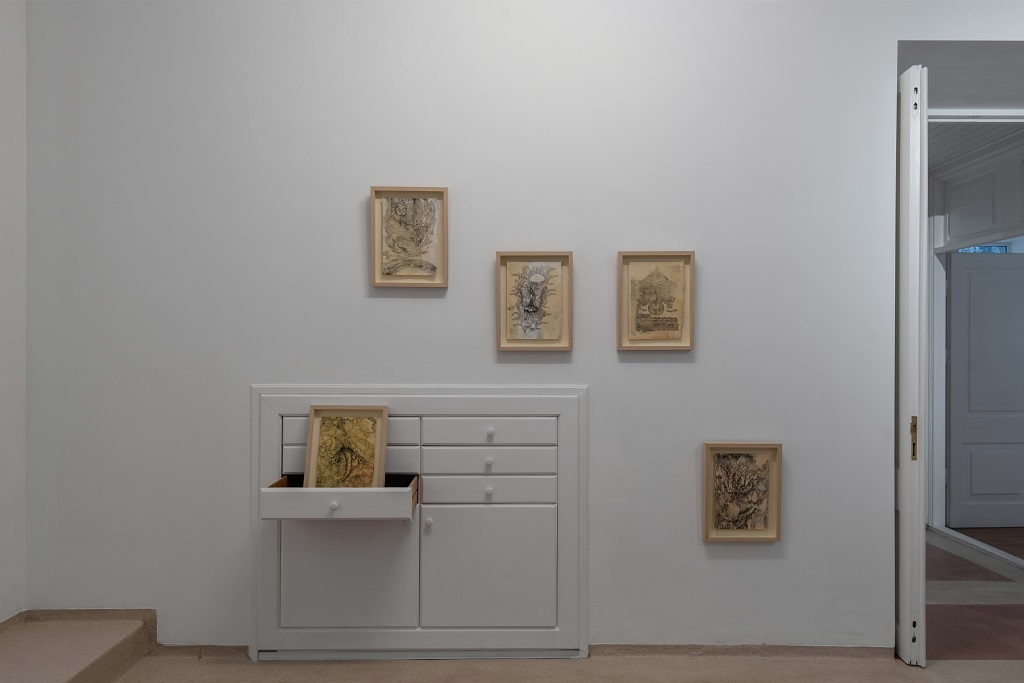
Exhibition view: Ieva Rižė, Archaeology of a Non-Existent Garden, 2022
